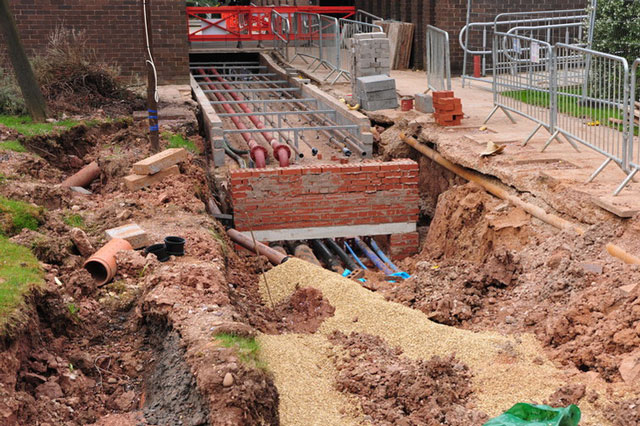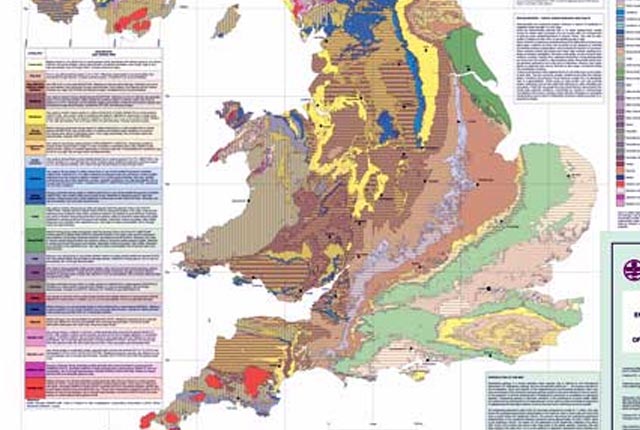The Mercia Mudstone Group in the UK is characterised by a sequence of brown and red-brown, calcareous clays and mudstones, with occasional beds of impersistent green siltstone and fine-grained sandstone. It was deposited between 200 and 250 million years ago in the Triassic period. It underlies much of central and southern England and is the bedrock on which many urban areas and their infrastructure are built.
Although the Mercia Mudstone appears to cause few serious geotechnical problems compared with other, higher plasticity clays, it is significant to the construction industry because it is frequently encountered in civil engineering activities involving foundations, excavations and earthworks.
Geological hazards and geotechnical problems
The Mercia Mudstone Group may vary between classification as soil or rock (based on BS5930:1999) depending on its detailed lithology and state of weathering. As a result of this, in some cases, weaker material may be found below stronger material. Consequently, sampling and testing is difficult because the material may not be suited to either soil- or rock-specific techniques.
Some parts of the Mercia Mudstone may be subject to shrinking and swelling with changes in moisture content to a sufficient degree that structural damage to buildings or disruption in some types of construction works is caused.
The Mercia Mudstone Group contains evaporite minerals, mainly halite (sodium chloride) and gypsum (hydrous calcium sulphate). These lithologies can cause significant problems for construction due to dissolution.
Mercia Mudstone may contain aqueous solutions of sulphate and sulphuric acid in the ground in sufficient quantity for potential chemical attack on concrete.
Report download
The Engineering Geology of British Rocks and Soils: Mudstones of the Mercia Mudstone Group (6.4 MB PDF) provides an in-depth study of formations within the Mercia Mudstone Group using data held in the National Geotechnical Database.
The geological, lithological, geotechnica, and mineralogical features of mudstones within the Mercia Mudstone Group have been described in detail, including implications for drilling and sampling and in situ testing.
Publications
Hobbs, P R N, Hallam, J R, Forster, A, Entwisle, D C, Jones, L D, Cripps, A C, Northmore, K J, Self, S J, and Meakin, J L. 2002. Engineering Geology of British Rocks and Soils: Mudstones of the Mercia Mudstone Group. British Geological Survey Research Report, RR/01/02. (Nottingham, UK: British Geological Survey.)
Jones, L D, and Hobbs, P R N. 1998. The Shrinkage and Swelling Behaviour of UK Soils: Mercia Mudstone. British Geological Survey Technical Report, WN/98/14. (Nottingham, UK: British Geological Survey.)
Relative topics
You may also be interested in:

Engineering geological studies of bedrock formations
Mapping the engineering geological characteristics, mineralogy, industrial applications, geological hazard potential, physical properties and behaviour of geological formations.

Engineering geology maps
BGS has produced 1:1 million-scale engineering geological maps of the UK, attributed with ‘engineering geological units’ in place of the traditional lithostratigraphical units.

